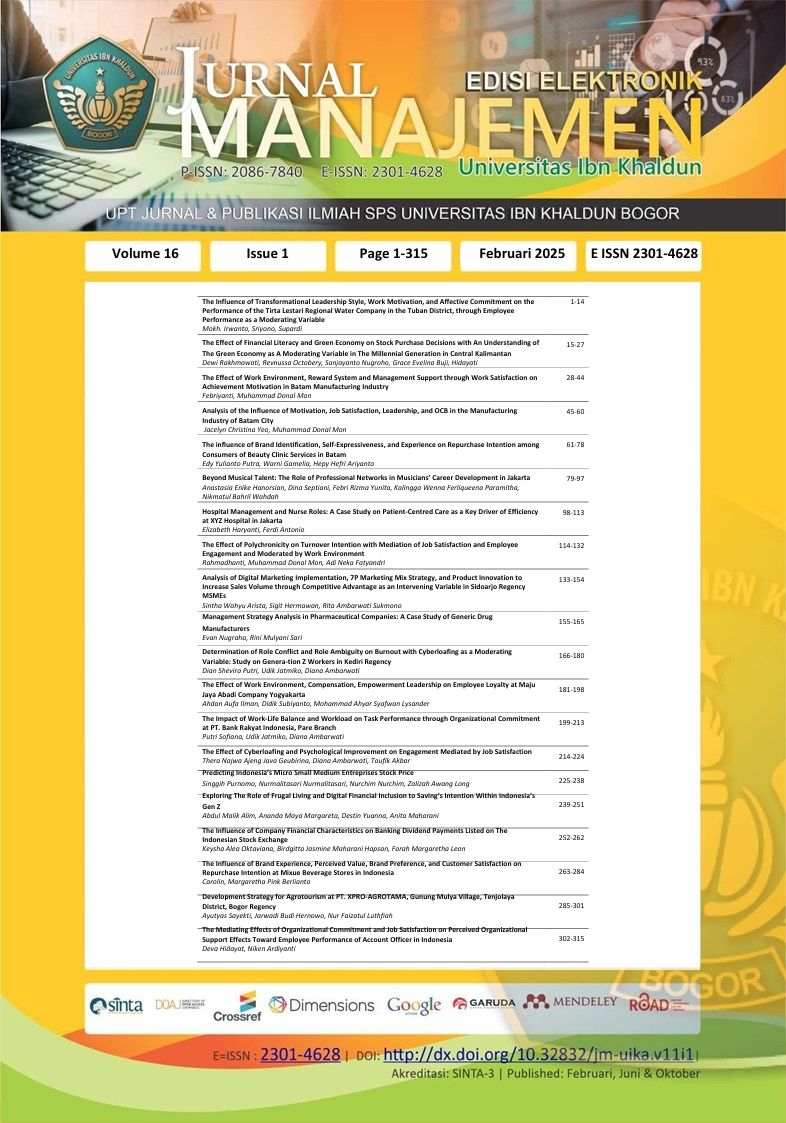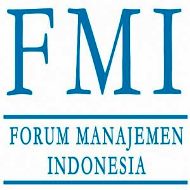Development Strategy for Agrotourism at PT. XPRO-AGROTAMA, Gunung Mulya Village, Tenjolaya District, Bogor Regency
DOI:
https://doi.org/10.32832/jm-uika.v16i1.17649Keywords:
Agrotourism, BMC, Industry foresight, Strategy, Fish farmingAbstract
This study seeks to uncover critical elements, industry insights, and problems affecting the advancement of agribusiness and agrotourism at PT. Xpro Agrotama Cinangneng, located in Gunung Mulya Village, Tenjolaya District. The objective is to de-sign a plan utilising the Business Model Canvas to transition to agrotourism or agrotourism. Agrotourism integrates agriculture and tourism, allowing visitors to engage with rural life and farm-ing practices for enterprises such as PT. Xpro Agrotama, engaged in aquaculture and agrotourism, presents a promising prospect for diversification by utilising natural resources, human capital, and local attractions. The research employs the Business Model Can-vas to discern strategic opportunities. Business-to-business (B2B) and Business-to-Consumer (B2C) strategies are analysed, empha-sising customer trust, booking systems, visitor happiness, and re-source utilisation. Results indicate that PT. Xpro Agrotama em-phasises trust and dedication in its reservation methods while guaranteeing tourist happiness. The company effectively employs natural and human resources, providing nature and fishing tour-ism. PT. Xpro Agrotama possesses significant potential for expan-sion into agrotourism by capitalising on its internal strengths and external prospects. This technique may facilitate the development of tourism villages in Bogor Regency, fostering sustainable rural tourism and helping the local population.
References
Barney, J. B. (2001). Is The Resource Based View A Usefull Perspective For Strategic Management Research? Yes. Academy of Management Review, Vol. 6, No. 1, 41-56.
Barney, J.B. and Clark, D.N. (2007). Resource Based Theory: Creating and Sustaining Competitive Advantage. New York: Oxford University Press.
Ben-Haim, Y. (2006), Info-Gap Decision Theory: Decisions Under Severe Uncertainty, 2nd ed., Aca-demic, London.
Chang, Hung-Hao, and Chad D Meyerhoefer. 2020. “COVID-19 and the Demand ForOnline Food Shopping Services: Empirical Evidence from Taiwan.” American Journalof Agricultural Economics 103: 448–65
Chin, C., Thian., S., and Lo, M. 2017. Community's experiential knowledge on the development of rural tourism competitive advantage : A study on Kampung Semadang - Borneo Heights, Sarawak. Tourism Review 72(2), 238, pp, 238-260. https://doi.org/10.1108/TR-12-2016-0056
Departemen Kelautan dan Perikanan. 2012. Buku Data Perikanan Tahun 2012. Kabupaten Bogor. Departemen Kelautan dan Perikanan, Kabupaten Bogor.
Dinas Kebudayaan dan Pariwisata Kabupaten Bogor. 2008. Data kunjungan wisatawan ke Kabupaten Bogor Tahun 2007-2012. Bogor: Disbudpar Kabupaten Bogor.
Gupta et al. 2020. “Economic Impacts of the COVID−19 Lockdown in a Remittance-Dependent Re-gion.” American Journal of Agricultural Economics 103: 466–85
Hamel, Gary & Prahalad, C.K. (1994): Competing for the Future, Boston, Harvard Business School Press
Mahajan, Kanika, and Shekhar Tomar. 2021. “COVID-19 and Supply Chain Disruption:Evidence from Food Markets in India.” American Journal of Agricultural Eco-nomics 103(1): 35–52
Osterwalder, Alexander, and Yves Pigneur. 2010. Business Model Generation. Jakarta: Wiley, John & Sons, Inc., Hoboken, New Jersey
Osterwalder A, Pigneur Y. 2017. Business Model Canvas. Ed ke-10. Natalia RS, penerjemah. Jakarta (ID) : Gramedia. Terjemahan dari : Business Model Canvas, 10th ed
Osterwalder, A., Pigneur, Y., Bernarda, G. and Smith, A., 2015. Value proposition design: How to create products and services customers want. John Wiley & Sons.
Pearce, J.A. and Robinson, R.B., 2008. Manajemen strategis: formulasi, implementasi, dan pengen-dalian. Jakarta: Salemba Empat.
P, Kotler, and Kevin Lane Keller. 2009. “Manajemen Pemasaran.” 13.
Schumpeter, J. A. (1949). Economic Theory and Entrepreneurial History. Change and the Entrepre-neur: Postulates and Patterns for Entrepreneurial History, 61-88.
Siregar, P. F., Budiarti, T. Sulistyantara, B. 20222. Identification Of Object And Tourist Attrac-tions For Agrotourism Development Of High Potential Village In Batang Sub-District. Jurnal Lan-skap Indonesia, Vol 15 no. 2, 2023, 61-69. doi : 10.29244/jli.v15i2.41770
Utomo, S. J. (2017, Desember). Strategi Pengembangan Desa Wisata Di Kecamatan Ka-rangploso Kabupaten Malang. Neo-Bis, 11, 142-153.
Varshney et al. 2021. “Government Transfer Payments, and Investment Decisions in Farming Busi-ness: Evidence from Northern India.” Applied Economic Perspectives and Policy 43: 248–69.
Yang, L. 2015. Tourism Development and Poverty Alleviation. Travel and Torism Research Associa-tion: Advancing Tourism Research Globally. available https://scholarworks.umass.edu/ttra%20/ttra2015/Qualitative_Research_Methods/5
Downloads
Published
How to Cite
Issue
Section
License
Copyright (c) 2024 Jurnal Manajemen

This work is licensed under a Creative Commons Attribution-NonCommercial 4.0 International License.
Authors who publish with this journal agree to the following terms:
- Authors retain copyright and grant the journal right of first publication with the work simultaneously licensed under a Creative Commons Attribution-NonCommercial-ShareAlike 4.0 International License that allows others to share the work with an acknowledgement of the work's authorship and initial publication in this journal.
- Authors can enter into separate, additional contractual arrangements for the non-exclusive distribution of the journal's published version of the work (e.g., post it to an institutional repository or publish it in a book), with an acknowledgement of its initial publication in this journal.
- Authors are permitted and encouraged to post their work online (e.g., in institutional repositories or on their website) prior to and during the submission process, as it can lead to productive exchanges, as well as earlier and greater citation of published work (See The Effect of Open Access).











